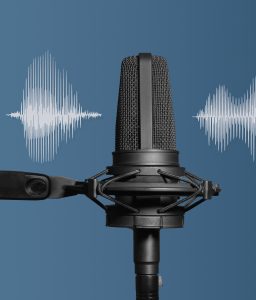A pair of friendly rivals in the measurement tech space are transitioning from competitors to co-workers.
On Tuesday, Claritas acquired AI-driven marketing automation platform ArtsAI. Founded in 2018, ArtsAI was a profitable, bootstrapped startup that chose not to take on funding from investors.
Claritas, a 50-year-old company with roots in the customer segmentation business, declined to disclose the financial terms of the deal.
ArtsAI marks Claritas’ fourth acquisition since it spun off from Nielsen with investment firm Carlyle Group’s backing six years ago and set its sights on becoming a closed-loop marketing platform.
Earlier acquisitions include multicultural audience targeting company Geoscape, ad tracking and measurement company Barometric and CRM and identity company AcquireWeb.
The two companies have complementary capabilities. But ArtsAI’s biggest draw is its core technology, embedded right in its name. “We have a very broad commitment to AI across Claritas,” said, Claritas CEO Mike Nazzaro, and the company plans to use the new AI tech both in its customer-facing products and internally.
Make me a match
One of ArtsAI’s main products personalizes ads using AI. For instance, if Peloton is advertising an exercise bike to a soccer mom in Charlottesville, Virginia; ArtsAI chief revenue officer and co-founder Erik Lundberg in the San Francisco Bay Area; and Lundberg’s mother, a senior citizen, it makes sense that those three potential customers should see or hear three very different ads, Lundberg said.
The ArtsAI tech “takes all the available input features,” such as the soccer mom listening to a cooking video on her Android in Charlottesville at noon on a Sunday or Lundberg on his iPhone in San Francisco at 10 p.m. on a Thursday. Then the tech customizes the voice-over, visuals, color scheme, video clips, call to action, headline, script and offer to the audience.
The Claritas identity graph can feed data and segments into ArtsAI’s tech so it can further personalize and optimize the Peloton video ad, according to Lundberg. If the soccer mom is in a user cohort that loves to travel, for example, the tech can show the Alps in the background of the ad.
“Without that data, AI personalization typically increases campaign performance 53%. When you feed that [Claritas] data, we believe it’ll be an order of magnitude larger,” Lundberg said.
That’s because the system learns from distributing all its potential combinations and converting certain users. It will learn, based on the profile of the person converted, what combination to serve for the next consumer, according to Nazzaro.
ArtsAI’s other primary product line, measurement, relies on an AI and machine learning probabilistic approach to determine whether someone saw or heard an ad and then visited the advertiser website. Its measurement product works across streaming audio and podcasting, display, digital video, and OTT/CTV. With the addition of Claritas’ identity graph, clients will be able to see which segments work best when measuring an ad campaign’s performance.
With Claritas’ identity graph, “you may have an IP address, you may have an email address. But you don’t know what pulls on the consumer’s heartstrings,” said Chase Miller, chief product officer at Claritas. That’s where ArtsAI’s tech comes in: providing consumer insights that allow advertisers to create more impactful and relevant ads.
The road to integration
For the remainder of the year, Claritas and ArtsAI will be running somewhat independently, Nazzaro said. An integration team is figuring out how to bring the two separate orgs fully together by January 1.
Together, Claritas and ArtsAI have more than 1,300 publisher, agency and brand clients, including iHeartMedia, SXM, MediaCom, Horizon Media, Progressive and T-Mobile. Many of their clients are shared. Next year, it will build a common dashboard for these clients, Lundberg said.
All 25 of ArtsAI’s employees are joining Claritas, bringing the total headcount to approximately 300.
“The more complete marketing solution we can provide our clients, the better off we are,” Nazarro said. “Anytime you use someone for your audience, someone else for your execution and someone else for your measurement, there’s a loss in signal.”

















